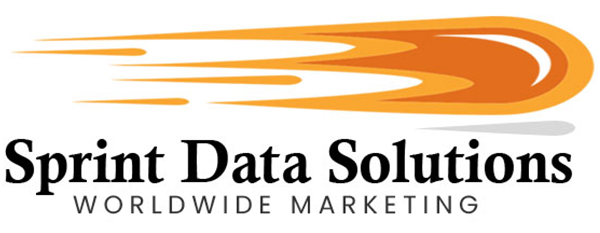Students Are A Growing Marketing Demographic If You Can Reach Them
Education stands as one of the most critical pillars of any advanced and civilized society, even if younger children often fail to appreciate its value. Its core purpose extends beyond mere instruction—it exists to preserve the collective wisdom, discoveries, and cultural advancements of humanity, and to transmit this body of knowledge to succeeding generations. Through education, individuals gain the ability to analyze, innovate, and contribute meaningfully to their communities. Without it, the world would not have witnessed the eradication of deadly diseases, the rise of groundbreaking technologies such as the Internet and smartphones, or the construction of towering, resilient structures that define modern cities. Knowledge, once acquired, must be preserved and continuously built upon to secure progress and ensure the well-being of future generations.
Despite its profound significance, education is often challenging, both for learners and educators. While young students may see school as an obstacle to leisure and play, adults who have experienced the world without the benefits of education often understand its true worth. In a global economy increasingly driven by skills and specialization, those who lack education face serious limitations in career opportunities and personal growth. On the other hand, individuals trained in medicine, engineering, programming, or even vocational trades like plumbing or electrical work become indispensable members of society. Education empowers people with the tools to solve real-world problems, make informed decisions, and adapt to an ever-changing world. Ultimately, it is through education that societies not only survive, but thrive.

The Challenges
The educational landscape in the United States is undergoing significant transformation, creating a more complex and uncertain environment for today’s students. Historically, the roadmap was clearer: pursue a college degree as the definitive path to success, job security, and upward mobility. A university education was widely regarded as a cornerstone for a prosperous future, and for decades, it fulfilled that promise for many. However, in today’s rapidly evolving economic and technological climate, that paradigm is shifting. While higher education remains essential for fields such as medicine, law, and scientific research, a growing number of lucrative and fulfilling careers no longer require a four-year degree. Instead, industries like advanced manufacturing, renewable energy, information technology, media production, and skilled trades such as electrical work, plumbing, and automotive repair are gaining recognition for their economic viability and social value.
This revaluation of educational pathways has emerged alongside broader socioeconomic challenges. The most pressing among them is the relentless rise in the cost of college tuition, which has far outpaced inflation and wage growth. Whereas earlier generations could feasibly work a summer job to cover a semester’s tuition, today’s students are confronted with fees that can exceed $30,000 annually at public institutions and much more at private ones—often rivaling the cost of purchasing a home. The result is a ballooning student debt crisis, with many graduates starting their professional lives already saddled with financial burdens that delay or derail goals like homeownership, entrepreneurship, and even family formation.
Moreover, today’s young adults are on track to be the first generation in modern American history that is economically worse off than their parents, with lower expected lifetime earnings, reduced job stability, and shrinking access to employer-sponsored benefits. The economy has also shifted toward contract work and gig-based employment, adding to the uncertainty. Against this backdrop, the question of what kind of education is “worth it” becomes increasingly nuanced. Students and families must now weigh the tangible return on investment of each educational option—college, trade school, coding bootcamps, apprenticeships—not just in terms of earnings, but job satisfaction, personal values, and long-term sustainability.
This evolving situation highlights the need for a broader societal understanding of success, one that recognizes multiple paths to a fulfilling and economically viable life. As the notion of a one-size-fits-all approach to education fades, both policy makers and communities must support diverse learning opportunities, promote financial literacy, and remove systemic barriers that hinder access to quality training. Only through such inclusive efforts can the next generation hope to navigate and thrive in this new era of educational and economic flux.
The Marketing Opportunities
As demanding as the current educational climate may be for young Americans, it still marks one of the most significant turning points in their journey toward independence. Even during their high school years, many students begin to experience a taste of financial autonomy. Those receiving generous allowances or part-time income are increasingly choosing to make their own purchasing decisions, selecting the goods and services that align with their personal needs and lifestyles—rather than deferring to parental preferences. This early financial engagement not only empowers them but also begins shaping their consumer behaviors.
However, the most profound transformation often occurs at the tertiary level—college or university—where independence shifts from a concept to a full reality. At this stage, young Americans are not only managing their day-to-day lives on their own but are also stepping into the realm of adult financial responsibilities. For many, this means confronting debt for the first time—primarily through student loans, but also through initial exposure to credit cards, personal banking, and budgeting for essentials such as housing, meals, and educational materials. While parents may remain a source of emotional and sometimes financial support, these young individuals are now legally recognized as adults. They sign contracts, make binding decisions, and begin building financial profiles that will follow them into the future.
This transition presents a unique window of opportunity for businesses and organizations aiming to serve a newly independent demographic. Products and services that align with the evolving priorities of this group—chief among them academic success and financial literacy—are particularly resonant. Young adults are now seeking tools and support that enable them to thrive in both their studies and personal lives.
Sprint Data Solutions Worldwide Marketing is well-positioned to assist companies in connecting with this dynamic audience. With comprehensive, curated databases of student populations, Sprint Data Solutions offers targeted outreach capabilities that reflect a nuanced understanding of this group’s diverse needs and aspirations. Whether by academic major, financial behavior, geographic location, or lifestyle choices, these databases enable precision marketing strategies that resonate deeply with college-bound or currently enrolled students, fostering higher engagement and conversion rates.
Educational Seekers
The largest segment within the education sector is comprised of individuals pursuing formal academic or vocational credentials. This diverse group includes a wide array of learners who are united by a common goal: obtaining a recognized certification that validates their knowledge and skills. Within this overarching demographic, more specific subgroups emerge—ranging from high school graduates seeking admission to traditional universities, to individuals pursuing associate degrees at community colleges, to those enrolling in technical institutes or trade schools for hands-on, career-oriented training. Graduate-level students pursuing advanced degrees such as master’s or doctorates also form a significant part of this audience. Additionally, there is a growing number of adult learners—often professionals or retirees—who are returning to education to reskill, shift careers, or fulfill personal ambitions. This expansive demographic spans multiple age groups, socio-economic backgrounds, and life stages, making it one of the broadest and most dynamic markets in the education landscape.
Student Financial Assistance Seekers
In previous generations, students were often able to afford post-secondary education with minimal financial strain. A summer job or modest parental savings could cover tuition and living costs for an entire academic year or even the full duration of a degree program. However, in today’s economy, soaring tuition fees, rising living expenses, and stagnant wage growth have made it nearly impossible for most students—except those from affluent backgrounds—to pursue higher education without substantial financial assistance.
As a result, student loans have become a cornerstone of educational financing, with the majority of students relying on government-backed or private lending to bridge the gap. In addition to loans, scholarships, grants, and bursaries are increasingly essential in offsetting the mounting costs. Importantly, financial needs vary widely among students. While some may require full tuition coverage, others may need help with housing, transportation, textbooks, or even digital access tools.
Furthermore, student financial planning extends beyond tuition. Managing daily living expenses—such as food, clothing, personal care, and communication—while maintaining academic responsibilities is a critical concern. Budgeting tools, cost-effective meal plans, affordable housing options, and access to second-hand goods or student discounts can significantly influence a student’s ability to remain financially solvent during their academic journey. Institutions and policymakers alike are now called upon to support not just academic aspirations, but also the holistic financial wellbeing of students.

Online Class Seekers
The shift to online remote learning during the pandemic initially emerged as a health and safety necessity, but its long-term impact has reshaped the landscape of education. For countless individuals, the ability to pursue courses online has removed significant barriers—particularly for working professionals who are unable to attend traditional classes held during the day, and for residents in remote or rural areas where access to physical campuses is limited or financially burdensome. Online learning platforms have democratized education by offering flexible schedules, a wide array of topics, and the ability to learn from anywhere in the world, enabling learners to tailor their educational journey around their personal and professional lives. The range of available courses is expansive, spanning academic degrees, vocational and technical training, certifications, and personal enrichment programs. As a result, a diverse demographic—from recent high school graduates to mid-career professionals—now finds value in online education.
This growing demand for digital learning has also spurred opportunities for related industries. Essential tools such as noise-cancelling headsets, high-quality microphones, ergonomic chairs, and external webcams are now considered vital components of the remote learning toolkit. Moreover, with the increasing importance of cybersecurity, services like VPNs, antivirus software, and identity protection have gained prominence among students looking to safeguard their digital learning environments. As this mode of learning continues to grow, both education providers and tech companies are finding new ways to support and enrich the online classroom experience.
Trade School Financial Assistance
It’s no longer just traditional universities that come with a hefty price tag for education. Increasingly, trade schools and technical colleges—often seen as faster, more direct routes into the workforce—also demand significant financial investment. These institutions, while not offering traditional degrees, provide highly specialized certifications and hands-on training in fields like welding, automotive repair, healthcare support, and HVAC systems. Ironically, despite their non-academic nature, the financial burden can rival or even exceed some university programs, especially when accounting for tools, equipment, and materials often required for training.
What makes this especially challenging is that many students who turn to trade schools do so because of financial limitations that prevent them from pursuing four-year degrees. As a result, they may find themselves in a tough spot—facing high upfront costs with limited access to traditional forms of financial aid. In this context, access to grants, affordable financing options, and flexible payment plans becomes critical. Furthermore, support services such as financial literacy programs, budgeting workshops, and time-management coaching can make a significant difference. These resources not only help students survive the financial strain but also set them up for long-term stability in their careers, making them a valuable addition to the modern vocational education ecosystem.
Student Debt Leads
In the 21st century, student loan debt has become an almost inescapable burden for many college graduates. With the cost of higher education steadily rising, it’s not uncommon for graduates to enter the workforce already saddled with tens of thousands of dollars in debt. This financial strain poses a significant barrier to traditional milestones such as buying a car, purchasing a first home, or even starting a family. If the next generation is expected to fully participate in and contribute to the economy, addressing student debt must become a national priority.
Graduates struggling with loan repayment are increasingly open to financial tools and services that provide relief or guidance. Programs like income-driven repayment plans, loan forgiveness initiatives, and loan consolidation options can make a meaningful difference. In addition, students and young professionals often rely on practical resources that ease their financial burdens—everything from budgeting apps and discount travel platforms to affordable housing, food banks, and thrift stores. Helping graduates navigate these financial challenges isn’t just a matter of compassion; it’s an investment in the long-term economic health of the nation.
Student Continuing Education Seekers
For many individuals, the aspiration to pursue higher education has long lingered in the background, often deferred due to pressing responsibilities like raising a family, maintaining a household, or building a stable career. These life commitments typically take precedence, leaving little room for academic ambitions. However, as children grow up, leave the nest, and begin their own adult lives, a significant number of seniors find themselves revisiting the dream of returning to school.
This demographic of older adult learners is unique and growing. Unlike traditional students, seniors are typically motivated by a passion for knowledge and personal enrichment rather than the pursuit of credentials or job advancement. Their financial stability also allows them to engage in learning without the burden of student debt or the pressure of future employment outcomes. As a result, they form a valuable market segment for educational institutions, technology providers, and service businesses. They are more likely to invest in high-quality educational tools, comfortable learning environments, digital literacy support, and lifestyle services that enhance their learning journey and social engagement. Their return to the classroom reflects a broader trend of lifelong learning, showcasing how education remains a vital and fulfilling pursuit at any age.
College Location
When students are accepted into college, it often entails relocating to a new city or town—an unfamiliar environment where they’ll need to get acclimated quickly. This transition presents a prime opportunity for local businesses to attract a fresh wave of potential customers every academic year. These students, many of whom are experiencing independent living for the first time, require everything from basic household goods to new routines for food, entertainment, and personal services. As a result, businesses such as restaurants, cafes, grocery stores, laundromats, salons, fitness centers, and retail outlets can benefit immensely by strategically marketing to this incoming population. By gaining early access to lists or insights about newly admitted students in a particular area, local companies can tailor their outreach efforts to meet the specific needs of this demographic. This allows them not only to build immediate sales but also to foster long-term brand loyalty during the students’ years of residency.
College Requirements
For most students, gaining admission to a college—particularly a prestigious, highly competitive “first choice” institution—is an intensely challenging and emotionally taxing journey. It typically demands sustained academic excellence, exceptional standardized test scores, and a compelling array of extracurricular achievements. Very few students enjoy the privilege of gaining admission with minimal effort; for the majority, the process requires months or even years of strategic planning and personal sacrifice. Beyond academic qualifications, universities often assess holistic factors such as leadership experience, community involvement, personal essays, and recommendation letters. Additionally, the decision to attend a specific college carries significant logistical and financial implications. Students and their families must consider tuition and fees, availability of scholarships or financial aid, cost of living in the area, and housing options both on and off campus. These comprehensive requirements and considerations present valuable opportunities for businesses and service providers to market tailored solutions—ranging from test preparation and admissions consulting to moving services and financial planning tools—to meet the diverse and evolving needs of college-bound students.
Degree Counselling Or Tuition Assistance
Gaining admission to a school is only the beginning of an academic journey that demands dedication, discipline, and sustained effort. Once enrolled, students must commit themselves to rigorous study schedules, navigate complex subjects, and prepare thoroughly for exams that serve as gateways to earning a degree, diploma, or certificate. While some individuals are able to manage these challenges independently, many find that additional support significantly enhances their success. This is where educational support systems, such as academic counseling and supplemental instruction, play a crucial role. Degree counseling helps students make informed decisions about the most suitable academic paths based on their interests, career goals, and aptitude. It also ensures that students align their course selections with long-term objectives, avoiding wasted time and resources
Career Placement & Career Counseling
Before entering tertiary education—and even during their studies—many students find it challenging and even overwhelming to make definitive decisions about their future careers. Although post-secondary students are legally recognized as adults, they are often still in the process of developing their identities, understanding their strengths, and evaluating long-term goals. This transitional period can be marked by uncertainty, experimentation, and the need for guidance.
Career placement and counseling services play a crucial role in bridging this gap between education and employment. These services empower students by helping them assess their skills, passions, and values in a structured and supportive environment. Counselors can guide students through career assessments, internship opportunities, networking strategies, and resume development, ensuring that each student is equipped with the tools necessary to make informed decisions. Furthermore, access to workshops, mentorship programs, job shadowing, and professional training can enrich their understanding of various industries and roles.
By introducing students to a broader array of career paths and offering concrete resources and personalized advice, these services foster greater confidence and preparedness. Whether students ultimately follow traditional paths or carve out unique professional journeys, early and ongoing exposure to career development support can have a lasting impact on their success and fulfillment. Products and services aligned with these goals—such as aptitude test platforms, job simulation tools, and virtual mentorship—are increasingly valued by educational institutions and learners alike.
Military Veterans Seeking Continued Education
Veterans transitioning from military service back into civilian life carry with them not only the deep personal costs of service—risking life and limb—but also the intangible sacrifices of time and opportunity. Many put their futures on hold, foregoing higher education, stable civilian careers, and critical formative experiences in order to serve and defend the United States. Upon returning, these individuals often face the daunting task of reintegration, and while their discipline and resilience remain strengths, gaps in formal education can be a hurdle. Fortunately, a wealth of educational opportunities now exists to help bridge that gap, supported by government programs like the GI Bill, vocational rehabilitation, and veteran-specific scholarships. These avenues make it increasingly feasible for veterans to pursue degrees, certifications, and technical training that may have previously been out of reach. In preparation for this next chapter, a range of products and services can play a vital role—from essential tech like laptops and tablets to professional attire and school supplies—all of which help ease the transition and set veterans up for success in their educational pursuits and beyond.

How Sprint Data Solutions Worldwide Marketing Can Help
Sprint Data Solutions Worldwide Marketing has cultivated one of the most comprehensive and ethically sourced databases of contact information available today. By leveraging a multi-pronged approach to data acquisition—including opt-in methods for account creation, subscription sign-ups, targeted surveys, and the voluntary collection of business cards—the company ensures that every piece of contact information complies with both legal and ethical standards. Beyond its proprietary data, Sprint Data Solutions has strategically partnered with trusted third-party data providers, further enriching its resources and expanding the breadth and diversity of available contacts. This approach enables clients to access a vast pool of leads tailored to their specific marketing goals.
What sets Sprint Data Solutions apart is its commitment to maintaining data quality and relevance. The company continuously audits and updates its databases to reflect the most current and actionable information. This is especially important for transient demographics like students, who enter and exit academic institutions on a regular basis. As these populations evolve, so too does the contact data, ensuring that marketers are always working with fresh, meaningful insights that drive engagement and maximize return on investment.
To further enhance the effectiveness of its offerings, Sprint Data Solutions integrates artificial intelligence into its analytics processes. Machine learning algorithms analyze the data to evaluate not just contact validity but also the likelihood of responsiveness. By interpreting patterns and metrics that indicate interest and engagement, these AI systems help identify prospects who are statistically more inclined to take action. This intelligent targeting empowers clients to prioritize leads based on behaviorally driven profiles rather than relying solely on basic demographic information.
A cornerstone of the database’s utility is its geographic granularity. While it supports broad, national-scale campaigns, it also provides the flexibility to target narrower regions—be it an entire region like New England, an individual state such as Massachusetts, or a hyperlocal area like North Cambridge in Cambridge, Massachusetts, home to Harvard University. This level of localization enables precision marketing that aligns with the unique characteristics and needs of specific communities.
Moreover, the data is stratified along multiple demographic lines, enhancing personalization and relevance. Whether a campaign is aimed at ethnic communities, such as Asian American students, or tailored to religious groups like Jewish youth, Sprint Data Solutions can provide filtered lists to match those criteria. Economic segmentation is also possible, allowing clients to focus on lower-income students for financial aid products, scholarships, or education-based services. Even medical conditions, such as identifying students with diabetes, can be factored into segmentation, resulting in highly targeted outreach that delivers superior engagement and conversion outcomes.
Contact Formats & More
Sprint Data Solutions Worldwide Marketing specializes in providing comprehensive and flexible database services tailored to meet a wide range of client requirements. Whether a business needs contact data for general consumer outreach or targeted B2B marketing campaigns, databases can be delivered in various formats that seamlessly integrate with existing client systems. For direct mail campaigns, physical mailing addresses are available, segmented by consumer or business categories to ensure highly targeted outreach. Email marketing efforts benefit from access to both individual and corporate email addresses, allowing for precision in digital communication. Additionally, for clients who prioritize more personal, immediate forms of contact, telephone numbers can be supplied. These include residential lines for consumer-focused campaigns and, crucially for B2B strategies, direct numbers to decision-makers rather than generic corporate lines or receptionists. Moreover, for mobile-first outreach strategies such as SMS or text message promotions, cellular numbers can also be provided to maximize reach and engagement.
To further support client marketing efforts, Sprint Data Solutions offers optional services that go beyond simple data delivery. For instance, companies that are interested in launching direct mail initiatives but lack internal expertise can benefit from a fully managed, turnkey direct mail solution. This end-to-end service encompasses all stages of a campaign, including initial concept development, graphic design, printing, and final distribution. All aspects are handled in-house, streamlining the process and ensuring quality control without the complexity and risk of juggling multiple third-party vendors. This holistic approach not only saves time but also helps clients execute professional, results-driven campaigns with confidence, regardless of their previous experience in direct mail marketing.
If you’re offering a product or service tailored for students, reaching the right audience is essential for success. Sprint Data Solutions Worldwide Marketing specializes in providing targeted education leads that connect you directly with students who are most likely to benefit from what you offer. Whether you’re promoting educational tools, lifestyle products, or financial services, our up-to-date, segmented student databases ensure that your campaign reaches the ideal prospects. Let us help you drive real results with precision-targeted outreach designed to convert interest into engagement.






